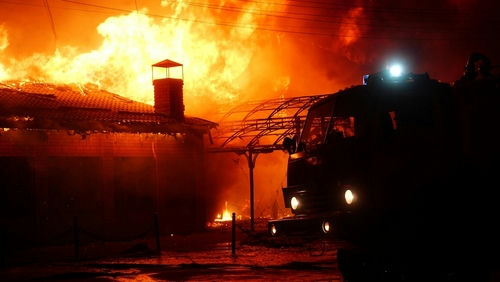In yet another tragic example of systemic failure, a fire at the Gabriel House assisted living facility in Fall River, Massachusetts, claimed ten lives, highlighting the glaring inadequacies in emergency services and preparedness for our most vulnerable citizens.
A Tragedy Unfolds at Gabriel House
The fire at Gabriel House erupted on the night of July 14, 2025, engulfing the assisted living facility and leading to a disastrous loss of life. Many residents, hampered by mobility issues, faced perilous conditions as the flames spread. The local fire department’s rapid response was met with the harsh reality of underfunded resources and the sheer difficulty of evacuating individuals who require assistance just to perform daily activities. This incident is the latest in a series of disasters that expose the systemic vulnerabilities faced by our elderly and disabled populations.
As the fire alarm blared and rescue operations intensified, the chaotic scene underscored the urgent need for better emergency protocols in facilities housing those most in need of protection. The Gabriel House tragedy is not an isolated incident; it echoes the challenges witnessed in previous fires, such as the Eaton fire in Altadena, California. These repeated failures demand a reevaluation of how we care for our elderly and ensure their safety during emergencies.
Underfunding and Accountability
The Fall River Fire Department, led by Fire Chief Jeffrey Bacon, has acknowledged the significant challenges they faced in executing the rescue operation. Chief Bacon, while expressing gratitude for the firefighters’ valiant efforts, highlighted the pressing issue of underfunding as a major obstacle. This sentiment resonates with the frustrations of many conservatives who understand that when the government prioritizes overspending in other areas, the essential services that safeguard our communities are left to flounder.
🚒 Gabriel House Fire – July 13th 🚒
During the tragic fire at the Gabriel House Assisted Living Facility, Fall River Firefighters were faced with extreme conditions and limited options.#L1314 #FallRiver #FallRiverFirefighters
📸: Kenneth Leger pic.twitter.com/FL6WmBXb1o— Fall River Firefighters (@IAFF1314) July 18, 2025
Families of the residents are demanding transparency and accountability. They are rightfully questioning the facility’s emergency preparedness and the adequacy of the response they received. The relationship between facility operators, emergency services, and regulatory agencies is under intense scrutiny, with overlapping responsibilities that have proven insufficient in protecting those they are meant to serve.
Regulatory Oversight and Future Reforms
State and federal regulatory agencies are now investigating the incident, focusing on the safety compliance and licensing of assisted living facilities. The long-term implications of this tragedy are likely to spur discussions on necessary policy changes. There is an urgent need for enhanced oversight and investment in emergency services to prevent future disasters of this magnitude. The call for greater accountability and improved safety standards is not just a local issue; it’s a national imperative.
Fall River fireman literally carried a man down a ladder and police located victims last night at the deadly fire at Gabriel House in Fall River. Submitted anonymously. pic.twitter.com/TyuUUcDgKP
— Fall River Reporter (@FallRiverReport) July 14, 2025
The economic, social, and political ramifications of such incidents are profound. The costs associated with emergency response, medical care, and potential lawsuits are mounting. Politically, there is mounting pressure on local and state officials to bridge the funding and regulatory gaps that leave our elderly and disabled citizens vulnerable. This is a clear call to action for those in positions of power to prioritize the safety and well-being of our most vulnerable populations.

